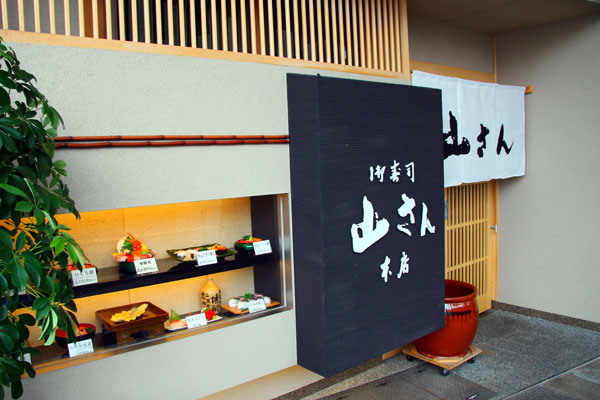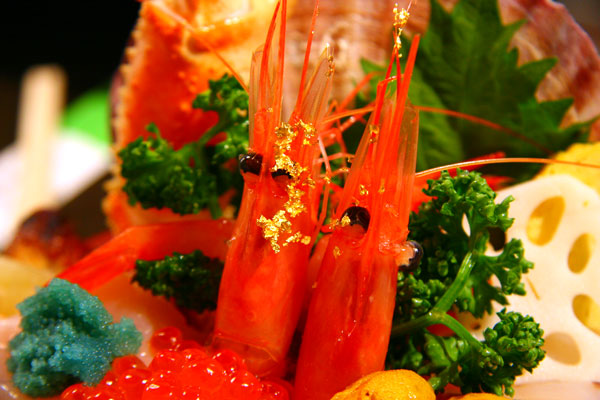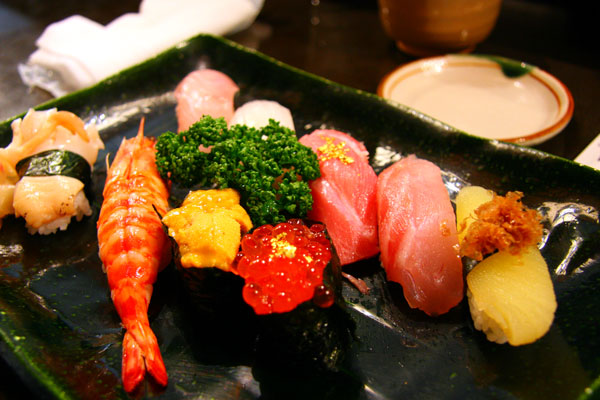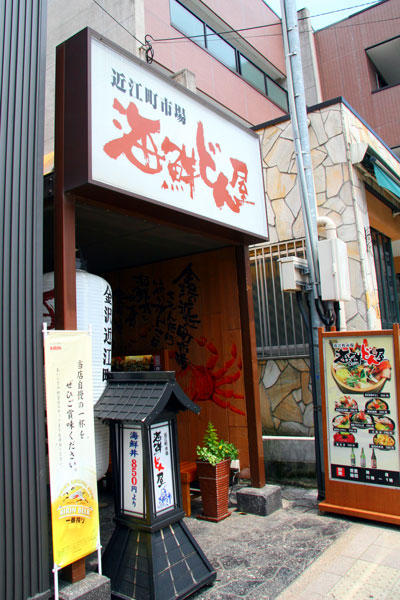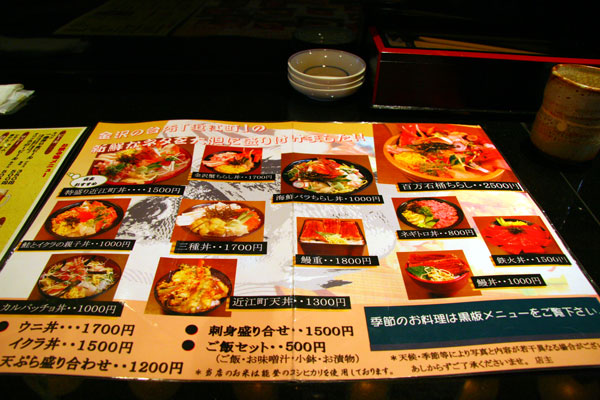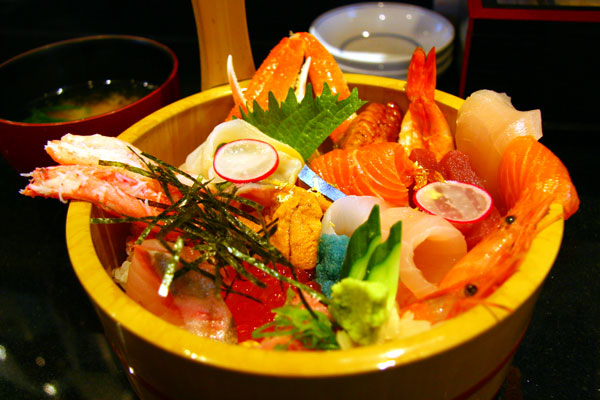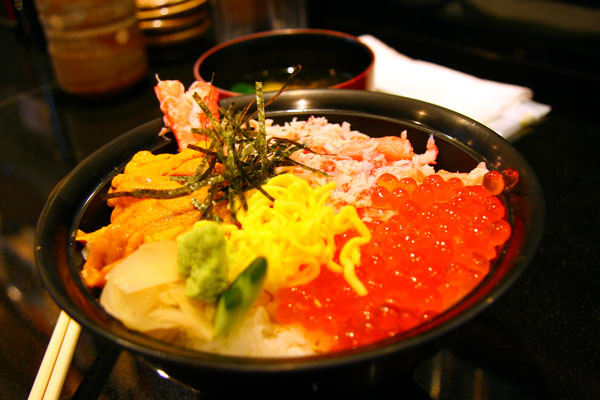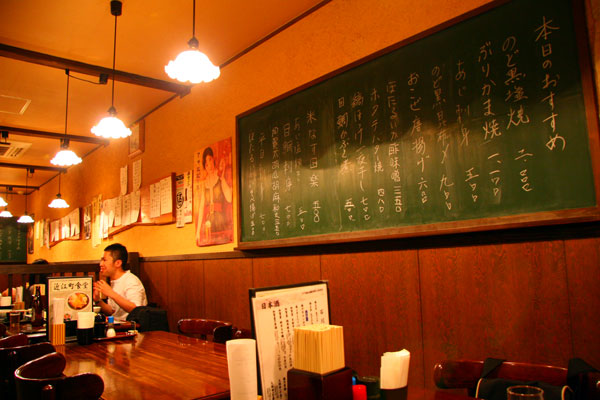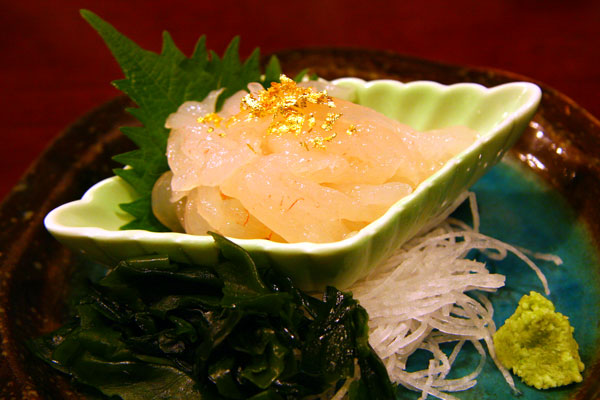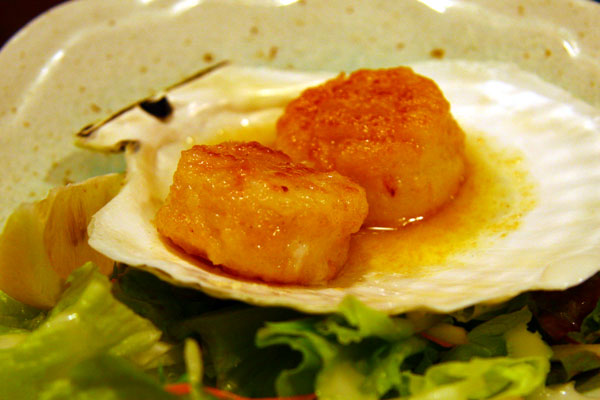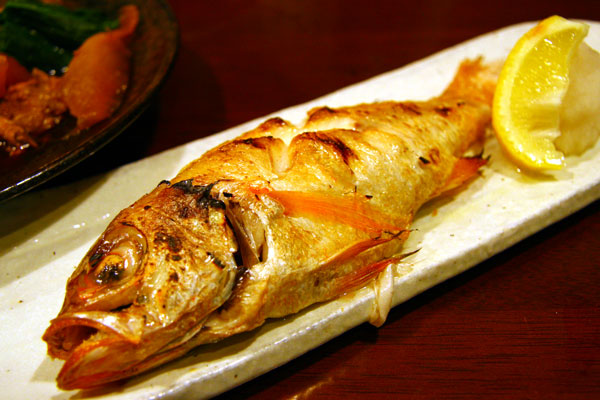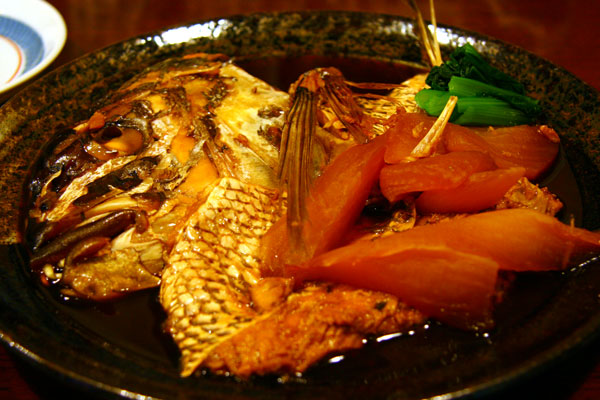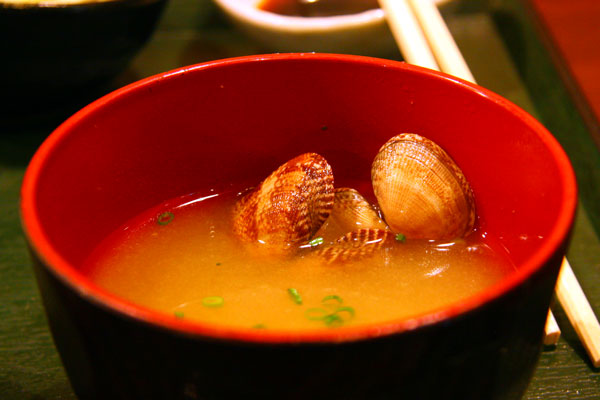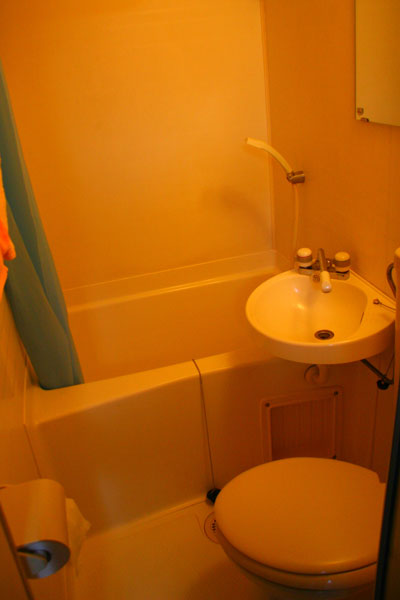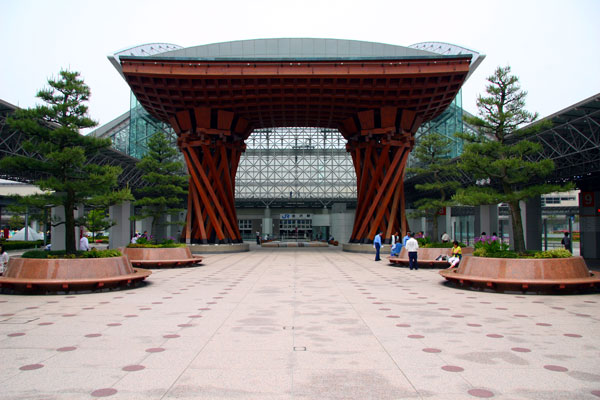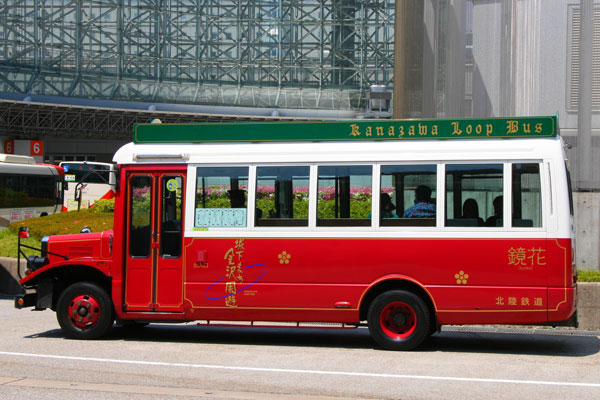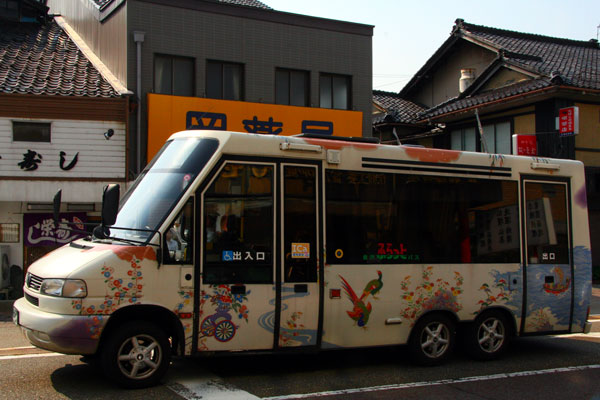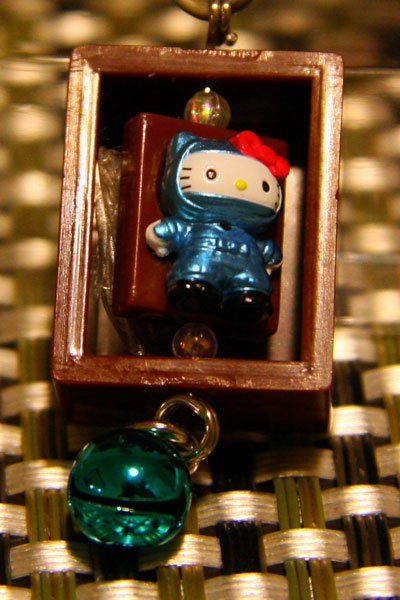
Before anyone reads on and possibly falls in love with Gokayama's unique charm, I must warn that this is a place where...
1) very little English is understood ... it's okay not to understand Japanese, but you'll need to communicate in body gestures
2) it's hours away from any major city ... practically in the middle of a remote mountain range
3) there's no hotel, and not even a full Japanese Ryokan ... you'll stay in one of their giant farmhouses with a thatched-roof
But once you get over these inconveniences, you'll be rewarded with a one-of-a-kind cultural experience even most of the Japanese never get to know.

Gokayama is a close collection of ancient rice-cultivating villages hidden deep inside the snowy mountains of Central Japan, famous as a UNESCO World Heritage Site for its cultural importance, yet fortunate enough to stay off the course of the relentless Japanese tourists. Villagers carry on their unhurried, self-subsistent farming from time immemorial, and (typically Japanese) guests get a glimpse of an old feudal lifestyle thought to be gone forever, especially to those coming from Tokyo or Kansai.
These aren't typical Japanese farmhouses, but colossal 3 to 5-storey buildings with gigantic cedar pillars and beams held together with only hand-woven ropes, and covered with the signature 3-feet thick thatched roof. This style of architecture is known as Gassho-zukuri (literally "Praying-hands Construction"), as the steepness of the roof is said to resemble the pressing-together of the hands during a buddhist prayer. This was developed, of course, as a defense against the region's heavy snowfall, which had isolated this region from the outside world for centuries and contributed to the development of its own unique culture. Even today the village gets snowed-in occasionally during its unpredictable winter.

We arrived at Gokayama's largest village, Ainokura, on a drizzly day during the May rice-planting season -- you can see the rice paddy fields in the foreground, artificially flooded a couple inches deep in preparation for the planting of rice seedlings. Occasionally a villager would come out with a rectangular tray full of green seedlings, waddle into the semi-submerged field, and insert each seedling into the mud by hand, row by row. Almost everyone we met was a villager -- we ran into less than 20 tourists the entire day. With an entire village of thatch roofs and snow-capped mountain peaks in the backdrop, it was the most peaceful, enchanted little hamlet, an oasis of ancient civilization and felt a million miles away from ultra-modern Tokyo.
So what are the sights? There's a museum and a shrine in the village, several hiking trails with elevated viewpoints above the village, and a little hotspring (Kuroba Onsen) accessible by car or the local bus less than 15 minutes away. But by far the best sight was ... our Minshuku guesthouse!
Hotel Review: Minshuku Goyomon (Gokayama)
Address: Toyama-ken Nanto-shi Ainokura 438
Price: 7850 yen per person including dinner and breakfast
Website/Map: http://www.goyomon.burari.biz/
How To Book:We faxed our booking request to the Gokayama Tourism Association ... in Japanese! I'm serious ... they hadn't grasped the concept of Internet yet, and even though someone made them a website, they didn't advertise any email addresses and wanted people to either call them or fax them. BUT ... the Association emailed us back when they wanted to confirmed our booking! Their email is info@gokayama-info.jp. Now you don't have to go through the whole faxing thing to book a room!
Directions: Refer to the Transportation section at the end of this article.

Like any other Gassho-zukuri farmhouse in the village, Goyomon is an architectural treasure of World Heritage status and protected by the charters of UNESCO. Think the Great Wall of China or the Leaning Tower of Pisa, and you'll understand our excitement about spending a night inside one of these testaments of human ingenuity. Inside its rustic minimalist beauty, it was quite easy to forget that Goyomon wasn't a museum, but a real home with a real family of ordinary people living in it.

Welcoming us into the guest-reception room was the alluring smell of Iwana trouts roasting in the square fire pit ... for our dinner. The setting was so surreal, as if we walked right into a Samurai movie or an Anime.

At the centre of any Gassho-zukuri house lies a square hearth (Irori), which not only provided the main source of heating back in the old days, but also served the important function of fumigating and hardening the network of ropes at the attic holding the house together. Back when the entire extended family used to live in one ancestral house, so the large room surrounding the fireplace also served as the living and dining room for up to 20 people. On this day it served just the two of us, as we turned out to be the only group of guests staying over on that particular night.

Goyomon was built in the final years of the Tokugawa Shogunate, before Japan opened its doors to the Western world, which makes it about 150 years old. But you wouldn't know judging from the immaculate condition of the house's interior. Apart from the little gas heater in the corner, time has stood still since the 1860's. Calligraphy plaques grace the aesthetic positions in the rooms, in this case imparting the traditional theme of "Loyalty and Filial Piety".

Being the only group of guests meant that we got one of the best rooms, consisting of two 6-Tatami-mat rooms divided by a typical sliding panel, and could have easily slept 4 people. The feather-filled futons and blankets were heavenly soft, especially compared to the cheap business hotel where we stayed the previous night at Kanazawa. But the best part was the view outside the window ...

... which looked exactly like this -- no exaggeration. Four-storey tall giant farmhouses, lush green primeval forests, and snow-capped mountains. We bought this Noren (warmth curtain) from the village's little souvenir store to remind us of the view outside our window on this magical day. To steal a line from the MasterCard commercial, it was ... priceless.

While the hostess was serving tea upon our early afternoon arrival, she asked us the surprising question of whether we liked to take a hotspring bath! As it turned out, our lodging price included a free dip at the little neighborhood hotspring bathhouse (which normally costs 600 yen!) plus free transportation in the hostess's own mini-van. The hotspring's name was Kuroba Onsen, an very old name which even our hostess didn't know what it stood for ... it could be "Black Horse", "Black Leaf", "Black Feather" etc, and she just wasn't sure.

Since we're in a remote little village in the middle of nowhere, we anticipated the neighborhood bathhouse to be a primitive, run-down wooden hut, but Kuroba Onsen turned out we beyond our expectations. It's a new two-storey building built right on the lake shore, with a restaurant, a relaxation room with coin-op massaging chairs, an indoor jacuzzi pool, and a semi open-air hotspring pool with a 180-degree panoramic view of the lake. No Konyoku (mixed gender bathing) here, in case you're wondering.

The hostess dropped us off at the Onsen for a couple hours and then picked us up in time for dinner. Maybe it was the blood circulation enhancement effects of the hotspring, but we worked up a voracious appetite. The meal consisted of 9 courses prepared with their local organic ingredients, which is to say relatively simplistic in Japanese terms (no fancy seafood or beef).

The sashimi dish was called Koi-no-Arai ("rinsed carp"), a freshwater fish found in the local mountain streams but mostly farmed nowadays. The texture was slightly chewy with a clean taste, but undermined by just the slightest hint of a "muddy" flavor.
"Muddy" flavor? The Japanese call it "Dorokusa", describing a subtle unpleasant flavor found in most freshwater fish. There are some fortunate people such as my wife who don't seem to possess the tastebuds to detect it, but for me it's so repulsive that I have given up on most freshwater fish. This Koi fish wasn't bad actually ... I just needed a little more wasabi than usual.

Here's the Iwana trout seen roasting at the hearth earlier. It looked the most impressive out of the nine courses, but the flavor turned out rather ordinary, and nowhere as good as ...

... this wonderful Tempura dish, which was by far the best course in the meal. Fresh, perfectly crisp and without a hint of oiliness ... a level of top restaurant quality you wouldn't expect from a rural housewife.
But the even better was the fresh, rare ingredients you won't easily find in Tokyo or Osaka (aside from the baby eggplant). In fact you won't find most of these vegetables even in the local farms -- these were wild, indigenous plants gathered from the same surrounding mountains that has been supplying these ancient villages for a millenium.
And the best of the best? The hostess called the green leafy plant in the picture "Yama-udo". The Chinese use its roots in traditional medicine, while the Japanese prize the young leaves as a delicacy. This was my first encounter with its wildly fragrant, somewhat herbal aroma, and to this day it remains one of my favorite memories of the food in Central Japan.
That's how good it was -- clearly the hostess's best dish and she knew it. When I complimented that her "Yasai no Tempura" (vegetable tempura) was excellent, she politely corrected me that these were "Haru no Sansai" (mountain vegetables of springtime). You could tell she's really proud of it.

Then there's more mountain vegetables -- this dish being in a Miso vinaigrette dressing.

And even more as Goma-ae.

And even more in a simmered dish. Wild-grown bamboo shoots and Zenmai ferns, accompanied by the locally-made hard tofu.

Gokayama's local tofu is famous for its hardness, which supposedly allowed the villagers to wrap a cake of tofu in straw ropes and carry it around. The taste? On the rich side I guess, but nothing spectacular.

Something other than Miso soup for a change -- wild Nameko mushrooms and Shirataki noodles.

Being a city dweller my entire life, it must had been at least 20 years since I last spent a night in a farming village. Evening was eeriely peaceful, and all one could see was the yellow silhouettes of the lattice windows, framed by the triangular rooflines of the Gassho-zukuri. The only bright light in the entire village came from the vending machine.

The entire village woke up at 06:30 to the minute-long pre-recorded "Ohayou Gozaimasu!" greetings heard from its outdoor loudspeaker system ... which probably could be heard for miles along this mountain valley. If you keep snoozing, no worries, since it will return and try to wake everyone again every 10 minutes or so. We found this more funny than annoying, and it's just part of the experience of staying in a real farming community.
Breakfast was served at the hearth again. It was one of the simplest Ryokan/Minshuku breakfasts we've ever had -- no meat, not even grilled fish, and of course no fancy Onsen Tamago. But the one real surprise was the little dish of (guess what...) wild plants at the left of the picture -- a dish of tenderly boiled fiddlehead ferns (Kogomi) collected from the nearby forests.

We checked out of Goyomon in the rain, but not before borrowing one of its traditional paper umbrellas for a romantic stroll to the village shrine and back. This concluded one of our most memorable Bed-and-Breakfast stays in Japan ... or anywhere in the world even. We've stayed in World Heritage status buildings before, the last time being in the Czech Republic. But the aroma and warmth of the trouts roasting in the square hearth, the delicate flavors of the wild plants, the beautiful architecture, and of course the legendary Japanese hospitality ... this was just something else.
Now that I've finished showing you the excellent Minshuku Goyomon, I have to reveal that it wasn't the Minshuku we originally booked!

We originally made a booking for Minshuku Yuusuke, supposedly the largest and best preserved Gassho-zukuri house in the village, and which once hosted the current Crown Prince of Japan. But upon arrival we found this black-and-white paper signage saying "In Bereavement" posted on the door frame. The owner, still red-eyed, explained that his elderly mother just passed away a few days prior to our arrival and that it was a taboo to receive guests for 49 days. Being a responsible host, he had pre-arranged for Goyomon to receive us in his stead.
Ainokura Folklore Museum

The only disadvantage of staying in the tiny Ainokura village is ... well ... it's a tiny village! The only advertised attraction here is a little museum converted from two of their better preserved Gassho-zukuri farmhouses. As tourists generally can't go upstairs at their own Minshuku (where the host families live), this exhibition offers the rare opportunity to see how these houses were put together in ropes and beams.

The museum was staffed with a couple of elderly volunteer ladies. To make up for not speaking any English, one of them would burst into singing their ancient folk songs while I played the village's own indigenous percussion instrument known as the Kokiriko. Playing it involved holding the handles at the two ends while whipping one end with a quick snap of the wrist, as I learned from the old lady.

Other exhibits focused on the goods the village supplied to the outside world, before the arrival of the modern society. The warm, humid upper floors of the Gassho-zukuri houses raised silkworms for silk production back in the feudal ages, while the tradition of handmaking the renowned Gokayama Washi paper persists to the present. The most fascinating were the displays associated with the old gunpowder industry of supplying the local warlord clan with Potassium Nitrate ... produced from the villagers' urine. If you get grossed out easily, remember not to touch the exhibits ...

Of course the real star of the museum was the museum itself, graciously exposing its intricate network of beams supporting the steep triangular roof. The straw ropes are said to last for centuries upon acquiring water- and insect-repellent qualities from the rising smoke and soot from the hearth below.

Accessing the top floors the traditional way -- not for those with a fear of heights.
Restaurants and Shops

There is ONE general store in the village, which functions as the noodle stand, the souvenir shop, the grocery store, the tobacconist, and even as the local post office. If you absolutely need your daily fix of Premium Calpis, stock up from the outside world before heading into Gokayama.
Transportation
Gokayama is saddled deep inside Central Japan's mountain ranges, and the closest major population centres are the cities of Takayama, Takaoka, and Kanazawa, each of them being at least a couple hours away by bus. This makes it unrealistic as a day-trip destination, no matter where you're coming from. And besides, there really isn't any point in depriving yourself of the experience of sleeping inside a Gassho-zukuri farmhouse, especially after managing to come all the way from Tokyo or Osaka.

There's only ONE bus route, connecting from the JR train station at Takaoka, through Gokayama, and onto the local transportation hub of Shirakawago. As of the time of writing (Nov 2008), there are 4 buses per day in each direction. If you can read Japanese, the Kaetsunou bus company's official website is here. If you can't, you'll just have to trust my translation of the schedule. To get off at the Ainokura village in Gokayama, the bus-stop you want is called "Ainokura-guchi".
SPRING/SUMMER SEASON SCHEDULE (check official site for low season)
JR Takaoka Station -> Ainokura-guchi -> Shirakawago
07:30 -> 09:23 -> 10:08
09:30 -> 11:18 -> 12:03
12:00 -> 13:48 -> 14:33
16:10 -> 17:58 -> 18:43
Shirakawago -> Ainokura-guchi -> JR Takaoka Station
07:05 -> 07:52 -> 09:46
10:35 -> 11:22 -> 13:16
13:10 -> 13:57 -> 15:51
15:15 -> 16:02 -> 18:00
The bus fare costs a substantial 1450 yen (CAD$14.5) from Takaoka, and 1200 yen (CAD$12) from Shirakawago. Remember you need to get off at the "Ainokura-guchi" bus stop ... tell the driver and sit close to the front.

This little hut is where you get off, if you're coming from Shirakawago. The village of Ainokura is 5 minute's walk uphill to the left.
Next you'll probably ask: How do I get to Shirakawago/Takaoka from Tokyo or Osaka or Nagoya?
From Tokyo or Osaka, you can first take the Shinkansen (bullet train) to Nagoya, en route to Shirakawago by bus. There is one direct bus from Nagoya to Shirakawago, leaving Nagoya's highway bus terminal (called Meitetsu Bus Centre and located right above the Meitetsu train station) at 09:00 and arriving at Shirakawago at 11:48. If this doesn't work for your schedule, take the JR train from Nagoya to Takayama, which departs hourly and takes about 2 hours. Five times a day, there's a bus outside of Takayama's JR train station that will take you to Shirakawago in 50 minutes.

As you can see, a trip from Tokyo would go through at least two transfers: Tokyo -> Nagoya -> Shirakawago -> Gokayama, with a total travel time of about 6 hours, one way. Now you understand why it has managed to keep its peaceful charm.
Gokayama vs Shirakawago
Most people visiting this region actually come to see the large traditional village of Shirakawago, home to more than 100 Gassho-zukuri farmhouses (Gokayama has 30 or so) and a world-famous destination for domestic and foreign tourists. Shirakawago has better bus connections, is more much commercialized and is always bustling with souvenir stores and coachloads of foreign tourists.
Which one's better? If you want the best photo spots, polished tourist attractions and a wide choice of souvenirs, you can't beat Shirakawago. But if you want an authenic and peaceful Shangri-La, which is what Shirakawago used to be before the arrival of mass tourism, Gokayama is all that's left today. Go now, before it's too late.

